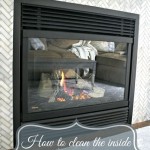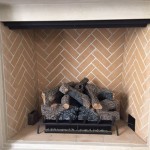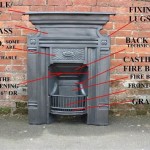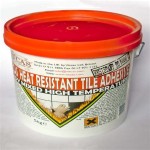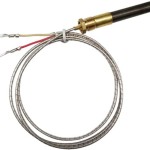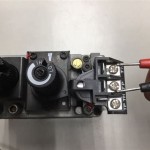Understanding the Key for Your Fireplace: A Comprehensive Guide
Fireplaces, whether wood-burning, gas, or electric, often incorporate keyed components to ensure safety, efficiency, and controlled operation. The “key,” in the context of a fireplace, typically refers to a specialized tool or device used to manipulate a particular function of the fireplace system. This could involve controlling gas flow, adjusting damper settings, or accessing maintenance panels. Recognizing the specific type of key required for a fireplace, and understanding its proper use, is crucial for safe and effective operation.
The term "key" can be applied to different components depending on the type of fireplace. For gas fireplaces, a valve key is essential for regulating the gas supply. For wood-burning fireplaces, a damper key might be used to adjust airflow. The functionality and design of these keys vary considerably, necessitating a thorough understanding of a specific fireplace model and its requirements.
Key Mechanisms in Gas Fireplaces: Gas Valve Keys
Gas fireplaces frequently utilize a gas valve key to control the flow of natural gas or propane to the burner. This key operates the gas valve, allowing the user to turn the gas supply on or off. The key is typically a small, usually metal, tool that fits into the valve stem. This stem is often located near the fireplace, either concealed behind a panel or readily visible. The design of the valve and key is intended to prevent accidental or unauthorized use of the fireplace.
The gas valve key system is a deliberate safety feature. Without the key, the gas supply remains shut off, preventing accidental gas leaks or unauthorized operation, particularly important in households with children or pets. To light a gas fireplace, the key is inserted into the valve stem and rotated, typically 90 degrees or more, to align the valve and allow gas to flow. Once the fireplace is lit, the key can be left in place or removed, depending on the design and user preference. However, removing the key provides an extra layer of security.
Selecting the correct gas valve key is paramount. These keys are typically universal in design, but variations exist in length and the shape of the valve stem interface. Ensuring a proper fit is essential to avoid damaging the valve or experiencing difficulty in turning the gas on or off. When replacing a gas valve key, it is advisable to consult the fireplace manufacturer's specifications or seek assistance from a qualified technician to guarantee compatibility.
Regular inspection of the gas valve and key is recommended to ensure proper functionality. Over time, the valve may become stiff or difficult to turn. Applying a small amount of lubricant, specifically designed for gas valves, can help to restore smooth operation. However, if stiffness persists, or if there is any evidence of gas leakage, a qualified technician should be consulted immediately.
The gas valve key represents a fundamental safety component in gas fireplace systems. Understanding its function, proper use, and maintenance requirements contributes significantly to the safe and efficient operation of the fireplace.
Key Mechanisms in Wood-Burning Fireplaces: Damper Keys
For traditional wood-burning fireplaces, the damper is a crucial component that controls airflow through the chimney or flue. The damper restricts airflow when the fireplace is not in use, preventing heat loss from the home and preventing drafts. When the fireplace is in operation, the damper must be opened to allow smoke and combustion gases to escape safely. Some fireplaces utilize a damper key or poker to manipulate the damper mechanism.
A damper key, often a long metal rod with a handle at one end, allows the user to reach and adjust the damper blade or plate. The design of the key permits manipulation of the damper from a safe distance, reducing the risk of burns or contact with hot surfaces inside the firebox or chimney.
The location and configuration of the damper mechanism can vary depending on the fireplace design. Some dampers are located at the top of the firebox, accessible from the front of the fireplace. Others are located further up the chimney, requiring a longer key to reach. The key typically interacts with a lever or linkage system that opens and closes the damper.
Using the correct damper key is essential for efficient and safe fireplace operation. Attempting to open or close the damper with an inappropriate tool can damage the mechanism or lead to incomplete opening or closing. A partially closed damper can result in smoke entering the room, while a fully closed damper during operation can create a dangerous buildup of carbon monoxide.
Regular inspection and maintenance of the damper mechanism are vital. Over time, the damper can become corroded or obstructed with debris, hindering its proper function. Cleaning the damper and lubricating moving parts can help to ensure smooth operation. If the damper is damaged or excessively corroded, replacement may be necessary to maintain safe and efficient fireplace performance.
The damper key, in conjunction with the damper mechanism, plays a crucial role in regulating airflow and ensuring safe operation of wood-burning fireplaces. Proper understanding of its function and maintenance requirements is imperative for homeowners.
Beyond Gas and Wood: Keys in Other Fireplace Systems
While gas and wood-burning fireplaces are the most common types that utilize keyed systems, other fireplace designs may also incorporate keys for specific functions. Electric fireplaces, for example, may use a key to access control panels or to enable or disable certain features. These keys are typically specific to the model and manufacturer of the electric fireplace.
Bioethanol fireplaces, which burn liquid bioethanol fuel, may also utilize keyed systems for safety purposes. The key might control the fuel supply or prevent unauthorized access to the fuel reservoir. The design and functionality of these keys vary depending on the specific fireplace model.
Even decorative fireplaces or fireplace inserts that do not produce heat may incorporate keyed mechanisms. These keys might be used to lock access panels or to control lighting or other cosmetic features. The specific purpose of the key is determined by the design and intended function of the fireplace or insert.
In all types of fireplaces, the use of a key serves a common purpose: to provide controlled access and operation. Whether it is controlling gas flow, adjusting airflow, or accessing control panels, the key ensures that the fireplace is used safely and responsibly.
When encountering a fireplace with a keyed system, it is crucial to consult the manufacturer's instructions or seek guidance from a qualified technician to understand the key's specific function and proper use. Attempting to operate the fireplace without understanding the key's purpose can lead to damage, inefficiency, or even safety hazards.
Therefore, thoroughly understanding the type of key used in a particular fireplace system, and its intended function, is paramount for safe and effective operation of any fireplace regardless of the fuel source or design.

Pro Flex Hearth Master Key Brushed Nickel Finish In The Gas Fireplace Log Accessories Department At Com

3 Inch Fireplace Universal Gas Valve Key Chrome

Hpc Fire Replacement Key

Blue Flame 12 In Universal Gas Valve Key Polished Chrome Nky The Home Depot

Key Valves

Dante 24 Inch Universal Valve Key

Affordable Universal Gas Valve Keys And Floor Plates For Fireplaces

Gas Valve Replacement Key

Blue Flame 3 In Universal Gas Valve Key Satin Chrome Bf Ky 06 The Home Depot

Pro Flex Hearth Master Key Black Finish In The Gas Fireplace Log Accessories Department At Com
Related Posts

